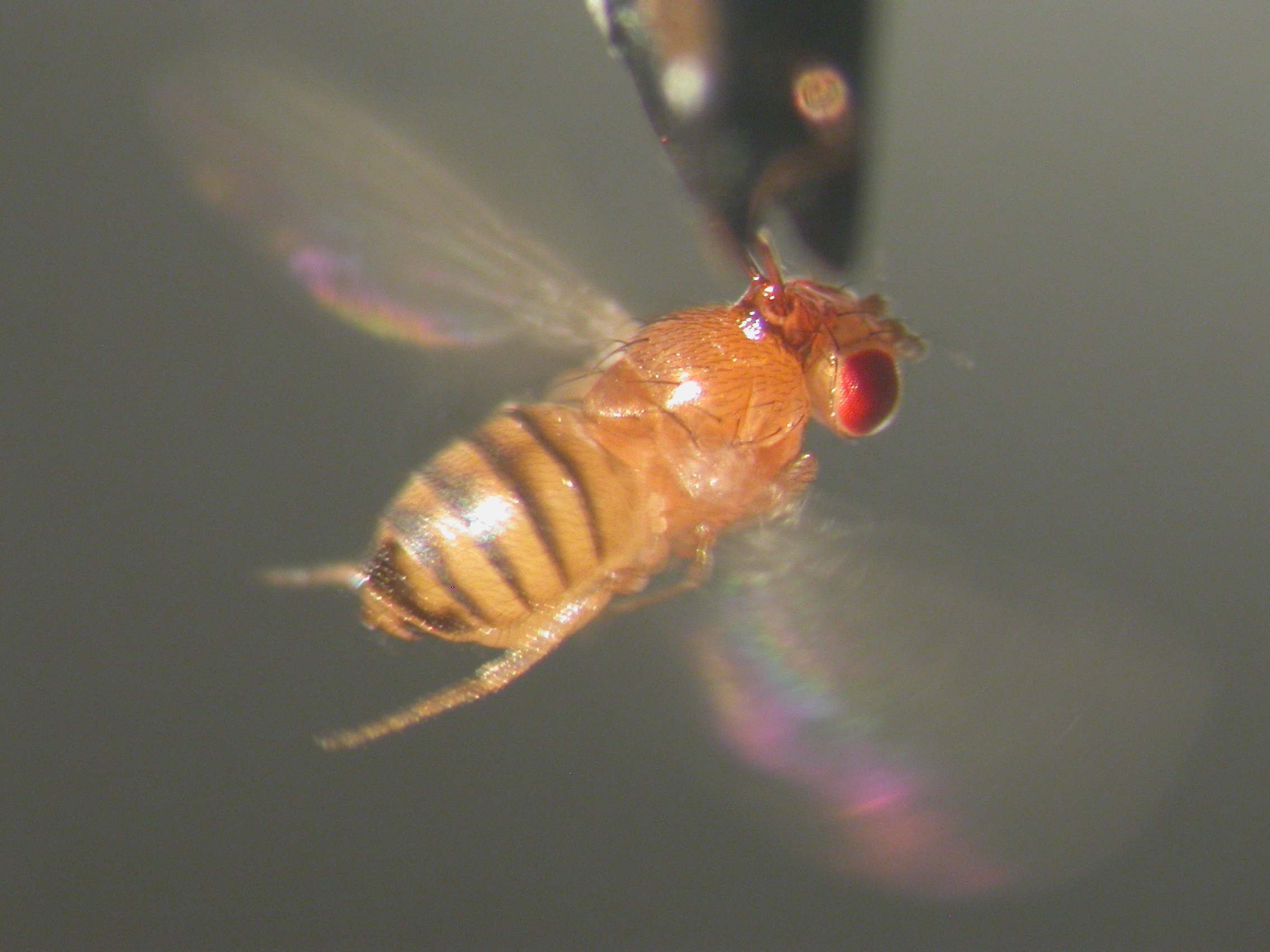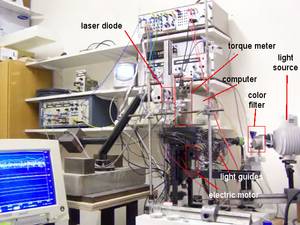I am currently trying hard to transition to a permanent faculty position.  This is a very competitive process and not without its idiosyncrasies. Every professor can tell you what a difficult time this is. Science is probably the only profession where you still count as a novice when you are 37 and have 12 years of experience on the job. In this situation, you face tremendous pressure to publish as soon as you can, as much as you can and in the most prestigious journals that you can. This obviously leads to the publication of a lot of over-hyped progress reports of questionable impact.
This is a very competitive process and not without its idiosyncrasies. Every professor can tell you what a difficult time this is. Science is probably the only profession where you still count as a novice when you are 37 and have 12 years of experience on the job. In this situation, you face tremendous pressure to publish as soon as you can, as much as you can and in the most prestigious journals that you can. This obviously leads to the publication of a lot of over-hyped progress reports of questionable impact.
But that's the way the system works, so we scientists have to play by the rules. You have to impress the powers-that-be and show them what a dedicated, hard-working, sleep-sacrificing, internationally mobile, hyper-intelligent prodigy you are. So, in this article, I am very grateful for the opportunity to not have to try to market myself and my work for a change but instead to be able to stick just to the fascination of science itself. I thought I will use these few paragraphs to describe what I am currently trying to publish and why I am so excited about what we have discovered.
Our human psyche says that we are spontaneous; that we always have a choice; we call the shots; we make the decisions. This basic notion is the foundation of any judicial system and it's, after all, what makes sports so much fun. But scientists have shown that many, if not all, psychiatric disorders interfere with this ability, including attention deficit disorder,depression, schizophrenia, autism, obsessive compulsive disorder and Tourette's.
Depending on your perspective of the animal world you might attribute similar abilities only to our closest ape or monkey relatives, or at a stretch our pet dogs and cats. Surely so-called lower organisms like fish or insects don't have this kind of freedom? After all, moths just circle aimlessly round light bulbs and fruit flies inevitably end up drowning in our wine glasses don't they?
But, if you look closely, even a fly does not always behave the same way in the same situations. There is always some variability in the behaviour of every animal. Of course, one could attribute that to slight variations in the environment or random processes in complicated biological machines, but we decided to take a closer look. Using some nifty new hardware and fairly sophisticated mathematics, we have successfully recorded and then analysed the flight behaviour of flies in different environments.
What emerged from these experiments was amazing. Our data suggested that a fly's brain is capable of amplifying any small or random fluctuations within the brain or in the environment. This amplification made it impossible to tell when exactly the fly would make the next turning manoeuvre, even though we could approximate the rough stretch of time when it had to occur.
The situation is similar to the weather, whereby our ability to forecast fly behaviour decays rapidly with the amount of time we want to forecast it for. Climate models are the same. Only if we disregard individual and small fluctuations can we make solid predictions. "April does what it wants" is a German proverb about the unpredictability of that month's weather. People use a similar phrase for cats and other animals. But, unlike the weather, I think we may now have found a way to study how brains achieve their spontaneity.
Among insects, flies are the most highly evolved group. Why would evolution favour a brain that produces such variable behaviour? Well, flies need to be able to move about in their environment, find food and mates and evade predators, just like all animals. But if a fly behaved the same way all of the time, predators would quickly be able to predict its moves and catch it.  It would also never find the unexpected patch of food if it flew the same way. Clearly, all animals need this sort of variability in order to survive and the brain provides them with this flexibility. It's also very likely that own human our capacity for spontaneity has evolved from these same humble beginnings.
It would also never find the unexpected patch of food if it flew the same way. Clearly, all animals need this sort of variability in order to survive and the brain provides them with this flexibility. It's also very likely that own human our capacity for spontaneity has evolved from these same humble beginnings.
But the story does not end there. There is another benefit of having this sort of spontaneous variability in behaviour, but it is not a direct survival benefit. The brain faces the daunting task of keeping track of all the incoming sensory information that assails us continuously, including sight, smell and touch. For example, when we turn around the entire room moves around in front of our eyes. But we don't sense the room moving. Instead we know that we moved. So, somehow, the brain has to keep track of what we just did and then anticipate and mentally subtract the consequences of our own actions, allowing us to ignore them. Some of these expectations are hard-wired, but some have to be learned.
This learning process is called "operant conditioning" and was made famous by Dr Skinner who trained rats to press levers for food. The key point is that unless the animal spontaneously pressed the lever once or twice in the first place, it would never learn that such an action could produce food. So spontaneous behaviour serves a dual purpose: it provides ecological advantages and the capability to very quickly pick out self-generated sensory input for operant learning. But, at the level of individual brain cells, how is this operant learning achieved?
Until now, most modern neurobiological research has focused on the process known as Pavlovian Conditioning, where relationships between external events are learned. Pavlov's discovery was that if a bell was rung whenever he fed his dogs they soon learned that a bell meant food and would begin to salivate just at the sound of bell, even before any food was presented. Scientists have since since shown that learning processes like this use a basic neurobiological principle called synaptic plasticity.
Synapses are the connections between nerve cells or neurons and it is thought that a particular set of molecular and structural changes in these synapses brings about learning. Because that is what was found wherever anybody looked, people thought that is all there is. Indeed, all animals that have been tested so far show both operant and Pavlovian learning, including flies. It has long been known that different brain areas hold the memories responsible for Pavlovian and operant learning, but there was no reason to believe any mechanism other than synaptic plasticity would be involved.
But a few years ago, whilst working on a marine snail called Aplysia, we found that a different form of neuronal plasticity was at play. We found that during operant learning in these animals, rather than synapses altering their activity, whole neurons changed. Specifically, we found that a so-called "decision-making" neuron in the brain of the snail became more excitable and thus more likely to fire after operant learning. Importantly, this neuron has to fire in order for the learned behaviour to be reproduced.
Now, using the fruit fly Drosophila, we have performed experiments which seem to indicate that the difference between the two forms of learning extends even beyond the cellular level. We found that a well-known Pavlovian learning gene, which was discovered in flies more than 30 years ago, is not required for operant learning. Moreover, another gene which is known not to be involved in Pavlovian learning is nonetheless involved in operant learning. Thus, there appear to be two different molecular processes for these two forms of learning. At the same time, my old Aplysia lab has confirmed these findings also for the snail. So maybe evolution has conserved this learning mechanism as well as the Pavlovian one and we can some day use this knowledge to treat the psychiatric disorders mentioned above?
It's now more than 80 years since Pavlovian and operant learning were distinguished for the first time. But how could it have taken so long to find out that there is apparently a separate learning mechanism for operant learning? Well, from the very beginning, people have suspected such a mechanism and many articles and books have been written on this topic. But only now are the experimental tools available to tackle this question.
On top of these technical problems, we also found another reason for the late discovery. Almost every operant learning situation contains a dominant Pavlovian component which is learned before any operant learning takes place. This is probably best explained with reference to Skinner's rats pressing a lever, even though we do not yet know if the exact same thing is happening there as in our flies. In these experiments rats needed to learn that, to be fed, they had to press a lever. It does not matter if the rat uses the nose, the right paw or the tail to press it.
This learning is of course a Pavlovian type of learning: the pressed lever indicates food for Skinner's rats just as much as the bell meant food for Pavlov's dogs. So in the first phase of almost any operant learning experiment, the animals only learn in a Pavlovian way. Only if you then keep training the animals, eventually the second learning mechanism kicks in and the actual behavior is learned. Psychologists have known about these two phases for many years and have called this second phase 'habit-formation'. But even after this prolonged training, researchers were still faced with having two memory traces to tease apart in the brain.
So what was the technical advance which allowed us to finally discover the second mechanism? We have developed experiments where you can isolate the operant component such that the only thing the animal has to learn to solve the task is the consequence of its behaviour, without any external stimulus at all. To find out if flies also learn in two phases if there are external stimuli, we have of course also added stimuli to these experiments. It turned out that not only are there two interacting memory systems, but indeed flies also learn in two phases much as mammals do. Reassuringly it seems that humans aren't the only creatures of habit - flies are too!









Comments
Add a comment